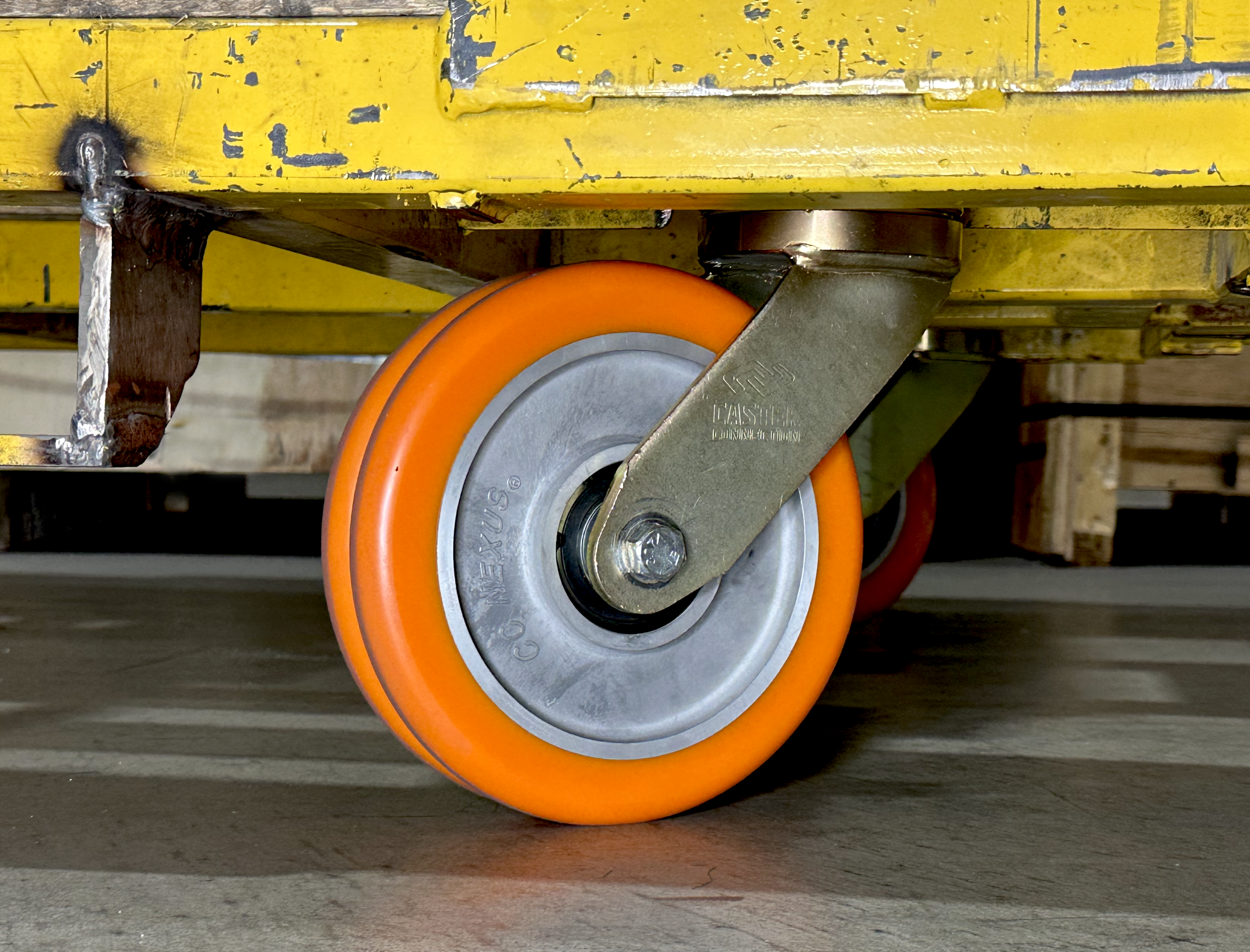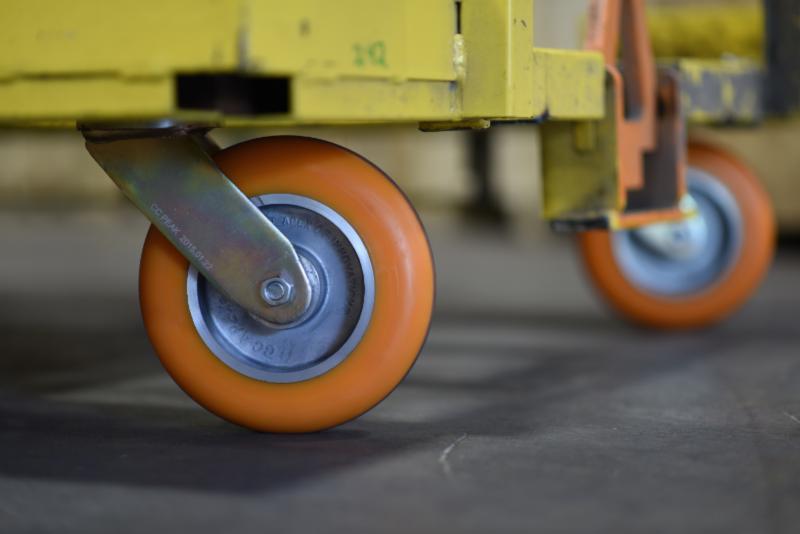How Ergonomic Casters Offset Rising Steel Costs

Steel prices continue to rise, and operations teams are feeling the pressure. Many are looking for ways to control costs without sacrificing performance or safety. One place they’re finding real value? Casters.

At Caster Connection, we work with companies to reduce long-term costs through smart, ergonomic caster solutions. They’re not just more comfortable for workers. They also improve efficiency, reduce injuries, and cut down on replacements. In this blog, we’ll show how better caster choices can help offset the impact of higher material costs and make your operation more resilient.
The Challenge: Higher Costs, Same Demands
With steel prices fluctuating and tariffs squeezing budgets, many companies are rethinking their procurement strategy. Cutting costs by choosing the cheapest casters often backfires. It can result in:

Frequent Caster Failures

Increased Strain on Employees

Slower Workflows

Higher Injury-Related Costs
What Makes A Caster Ergonomic?

Ergonomics is the science of designing equipment to support human movement and reduce physical strain. In industrial settings, that means helping workers perform repetitive tasks like pushing and pulling without risking injury or fatigue.
An ergonomic caster is built to make those movements easier. It reduces the amount of force required to get a cart moving, keeps that motion consistent, and responds smoothly to changes in direction or surface conditions.
Several key features determine how ergonomic a caster is:
-
Low rolling resistance: Reduces the initial force needed to start and maintain movement.
-
Responsive swivel motion: Allows smooth turns and directional changes without binding or drag.
-
Shock-absorbing treads: Help minimize vibration, especially on rough or uneven floors.
-
Durable, floor-safe materials: Prevent gouging, reduce noise, and keep carts stable under load.
These elements work together to support safer, more efficient movement with less effort from the operator. The result is fewer injuries, better productivity, and longer-lasting performance from both workers and equipment.
How Ergonomic Casters Help You Save
The value of an ergonomic caster goes far beyond the initial purchase price. When carts are easier to move and built to last, your operation sees fewer injuries, more consistent output, and less strain on equipment and personnel. These gains translate directly into cost savings across multiple areas of the business.
Fewer Workplace Injuries = Lower Costs
Musculoskeletal disorders are among the most common and expensive workplace injuries. Reducing the physical strain of moving carts and equipment can lead to fewer workers' compensation claims, less lost time, and lower insurance costs.

Better Workflow = Increased Productivity
Casters that move easily and track predictably help workers move faster and more efficiently. Less effort means less fatigue, better throughput, and more consistent output.

Long-Term Durability = Fewer Replacements
Ergonomic casters from Caster Connection are built with materials that withstand constant use. That means fewer breakdowns, less downtime, and less time and money spent on replacements.
Each of these benefits contributes to meaningful savings over time. Combined, they help offset the impact of rising steel costs and provide better value across your operation.

Real-World Example: Ergonomics in Action

A major automotive manufacturer partnered with Caster Connection to address rising injury rates and premature caster wear on high-use carts. After switching to a tailored ergonomic caster solution, they recorded measurable improvements across multiple performance areas.
-
A 40% reduction in material handling injuries
-
A 15% increase in line throughput
-
A 60% decrease in caster replacement frequency
By investing in a caster designed for easier movement and greater durability, the facility improved efficiency, reduced injury-related costs, and strengthened overall return on investment.
Shop Ergonomic Casters
8" CC Peak Maintenance-Free Swivel CC Apex Caster w/ Extended Swivel Lead
SKU: CC-3210-800200-40-T1
ALT-SKU: CCAPEX-8S-EMF-EXT
-
- Overall Height
- 9-1/2"
- Wt. Capacity
- 1,200 lbs.
- Wheel Width
- 2"
- Wheel Diameter
- 8"
6" CC Peak Maintenance-Free Swivel CC Apex Caster w/ Built-In Brake
SKU: CC-3210-600200-40-T1-BIB
ALT-SKU: CCAPEX-6S-EMF-BIB
-
- Overall Height
- 7-1/2"
- Wt. Capacity
- 1,000 lbs.
- Wheel Width
- 2"
- Wheel Diameter
- 6"
8" CC Apex Kingpinless Swivel Caster
SKU: CC-2110-800200-40-T2
ALT-SKU: CCAPEX-8S-KP-TP2
-
- Overall Height
- 9-1/2"
- Wt. Capacity
- 1,200 lbs.
- Wheel Width
- 2"
- Wheel Diameter
- 8"
10" X 3" CC APEX HD KINGPINLESS SWIVEL CASTER
SKU: CC-6120-010300-40-T2
ALT-SKU: CCAPEXHD-1030-S-KP
-
- Overall Height
- 11-1/2"
- Wt. Capacity
- 3,000 lbs.
- Wheel Width
- 2"
- Wheel Diameter
- 10"
10" X 3" CC APEX HD DUAL-WHEEL KINGPINLESS SWIVEL CASTER
SKU: DC-D220-010300-40-T7
ALT-SKU: CCAPEXHD-1030-SKPD-TP2-OH2
-
- Overall Height
- 12-1/2"
- Wt. Capacity
- 6,000 lbs.
- Wheel Width
- 2"
- Wheel Diameter
- 10"
12" X 3" CC APEX HD KINGPINLESS SWIVEL CASTER OVERALL HEIGHT 13-1/2"
SKU: DC-5720-012300-40-T2
ALT-SKU: CCAPEXHD-1230-S-KP
-
- Overall Height
- 13-1/2"
- Wt. Capacity
- 3,500 lbs.
- Wheel Width
- 3"
- Wheel Diameter
- 12"
8" CC Nexus Kingpinless Swivel Caster with Extended Swivel Lead - 4" X 4-1/2" top plate
SKU: CC-2215-800200-40-T1
-
- Overall Height
- 9-1/2"
- Wt. Capacity
- 1,750 lbs.
- Wheel Width
- 2"
- Wheel Diameter
- 8"
8" CC Nexus Maintenance-Free Swivel Caster - 4" X 4-1/2" top plate
SKU: CC-3115-800200-40-T1
-
- Overall Height
- 9-1/2"
- Wt. Capacity
- 1,750 lbs.
- Wheel Width
- 2"
- Wheel Diameter
- 8"
8" CC Nexus Kingpinless Swivel Caster with Built-In Brake - 4" X 4-1/2" top plate
SKU: CC-2115-800200-40-T1-BIB
-
- Overall Height
- 9-1/2"
- Wt. Capacity
- 1,750 lbs.
- Wheel Width
- 2"
- Wheel Diameter
- 8"
8" CC Peak Maintenance-Free Swivel CC Stout HD Caster
SKU: CCSTOUT-EMF-8S
-
- Overall Height
- 9-1/2"
- Wt. Capacity
- 1,500 lbs.
- Wheel Width
- 2"
- Wheel Diameter
- 8"
6" CC Peak Maintenance-Free Swivel CC Stout HD Caster w/ Extended Swivel Lead
SKU: CCSTOUT-6S-EMF-EXT
-
- Overall Height
- 7-1/2"
- Wt. Capacity
- 1,200 lbs.
- Wheel Width
- 2"
- Wheel Diameter
- 6"
8" CC Peak Maintenance-Free Swivel CC Stout HD Caster w/ Built-In Brake
SKU: CCSTOUT-EMF-8S-OH2-BIB
-
- Overall Height
- 10-1/8"
- Wt. Capacity
- 1,500 lbs.
- Wheel Width
- 2"
- Wheel Diameter
- 8"
Ergonomics Pay Off
Rising steel prices may be out of your control, but how you respond is not. Choosing ergonomic caster solutions helps reduce risk, improve workflow, and lower your total operating costs over time. It’s not just about comfort. It’s about making smarter, more efficient sourcing decisions.
If you’re ready to explore cost-saving improvements through ergonomics, we’re here to help. Talk to our team, request a quote, or schedule a Caster Needs Evaluation to get started.
